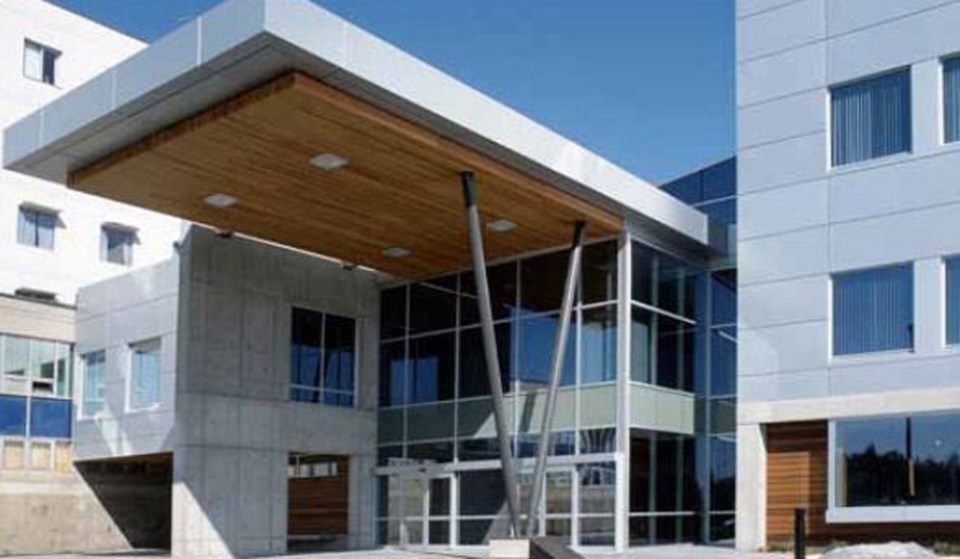Two major expansions planned at the University Hospital of Northern B.C. are projected to cost a combined $660 million, with property tax payers in the Fraser-Fort George Regional Hospital District expected to contribute 40 per cent.
The proposed UHNBC acute care tower, first announced in September 2020, is expected to cost $600 million, of which the local hospital district will be expected to fund $240 million, according to a report presented to the hospital district board. A project to add additional residential care and alternative dementia beds is expected to cost a further $60 million, with local property tax payers picking up $24 million of the cost.
“It’s not that these projects aren’t needed, because they are needed, but I think the tax burden on local taxpayers is incredible,” Coun. Brian Skakun said during a hospital board meeting last week. “Our fees went up (more than) 25 per cent for the local taxpayers this year.”
Skakun represents the City of Prince George as a director of the Regional District of Fraser-Fort George and on the Fraser-Fort George Regional Hospital District. He said he's concerned about rising hospital tax rates for property owners in the City of Prince George and Regional District of Fraser-Fort George.
The regional hospital district has the same borders as the regional district, and collects property taxes to fund capital projects at hospitals in the region, including UHNBC. The regional hospital district's contribution to capital projects at regional hospitals is typically 40 per cent of the total cost.
In 2021, the hospital board’s tax requisition rate was $0.6354 per $1,000 of assessed value, and rose to $0.6854 per $1,000 in 2022. The hospital board’s long-term financial plan calls for another $0.05 per $1,000 increase in 2023, followed by annual four per cent increases each year until 2036.
The regional hospital board’s total tax requisition has grown from $5.8 million per year in 2015 to $17.77 million per year in 2022.
The regional hospital board will consider its 2023 budget, which will determine the tax rate, at a meeting in March.
In 2022, the hospital tax portion of the property taxes on an average home in the regional district (valued at $400,899) was $274.16, up from $212.25 on an average home (then valued at $334,045) in 2021.
Within the City of Prince George the hospital taxes on an average house (worth $410,891) in 2022 was $311, up from $190 on an average home (then valued at $341,075) in 2021 – a 61 per cent increase.
PROJECTS STILL IN PLANNING PHASE
In an email, a spokesperson for Northern Health said both major capital projects are still in the planning phase, and a business plan for the projects is being submitted to the Ministry of Health.
“Budgetary information provided to the Fraser-Fort George Regional Hospital District with respect to both projects are estimated budgets, as Northern Health continues to develop its 2023/24 fiscal year capital plan and future funding requests to RHDs as business plan approvals come into place,” the spokesperson said. “The figures provided to the RHD are estimates; final numbers and investment are determined through the business case process and may change when taking into account current economic realities.”
The new hospital tower is expected to include new mental health, surgical and cardiac units, according to an initial announcement by the provincial government.
The regional hospital district board is expected to receive an update from Northern Health on the proposed acute care tower between May and July, according to the regional district report.
In an email, Chris Calder, general manager of financial services for the regional district and regional hospital district, said the hospital board has not committed to funding the acute care tower project.
“To date, the FFGRHD Board has approved funding of the business plan for the project and the contribution made to the business plan will be credited against any FFGRHD contribution to the project should the project proceed and a final contribution from FFGRHD is determined,” Calder said. “Once the FFGRHD Board approves the FFGRHD’s contribution to the new acute care tower, this contribution is planned to be covered by a combination of reserve funds and long term borrowing through the Municipal Finance Authority.”
The regional hospital board’s capital reserve fund stood at an estimated $58.1 million at the end of 2022, according to the district’s report to the board. The capital reserve fund grew by an estimated $11.03 million last year.



